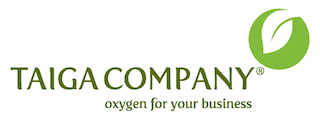Turning Your Community Into A Greener Place

We can all take steps, as individuals, to try and live more sustainable lives. However, the truth is that cooperation is going to be needed across all levels to really make the changes that the planet’s health demands. While we can wait and hope for these changes to be made from the top down by corporations and larger-scale institutions, it might be a healthier use of time to see how you can help make your own community a greener place. Here are a few ways you can do that.
Encourage xeriscaping with your own
The work you can do in spreading good practices is to start by demonstrating them. Green landscaping services , also known as xeriscaping, prioritize sustainable practices such as reducing or even completely eliminating the need for additional water than the landscape naturally provides. If you start demonstrating ways of landscaping that are greener and then talk to your neighbors about them, then you increase the chances of them picking up your style, as well. This can make your neighborhood a much better place when it comes to both reducing water usage and reducing their reliance on chemical fertilizers.
Work with the institutions behind it
In terms of institutions that you can affect, your homeowner’s association might be one that’s a lot more accessible to direct change. There are a lot of ways benefits to working with an HOA, including being able to have a direct say in the running of the community through HOA management services. From there, you can implement plans such as energy reduction and recycling plans that you can share with your neighbors and strategies to educate and involve residents.
Support (or start) green businesses in the community
The community isn’t just the homes surrounding you or the people living in them, it’s also the services, businesses, and other organizations that run within and around the community as well. Vocally and visually supporting these businesses can help them not only stay open but offer positive social proof for your neighbors, encouraging them to do the same. Of course, if you want to make the most impact, starting your own green business is the biggest step you can take in introducing some green ideas to your neighborhood.
Work to make your community a better place
You can also work directly on the community, helping to make it the kind of place that people want to work to preserve and sustain. Local volunteering efforts , such as cleaning up waste or helping to provide aid to local ecosystems, might already be active in your area and joining them is one way of directly contributing. However, if there aren’t any, then starting one yourself could help you start getting your community to develop a more collaborative spirit with the shared aim of keeping the community up to high standards.
Of course, one person can’t change a whole community for the better. All you can do is fight for the ideas you believe in, but hopefully the tips above help you do that.


